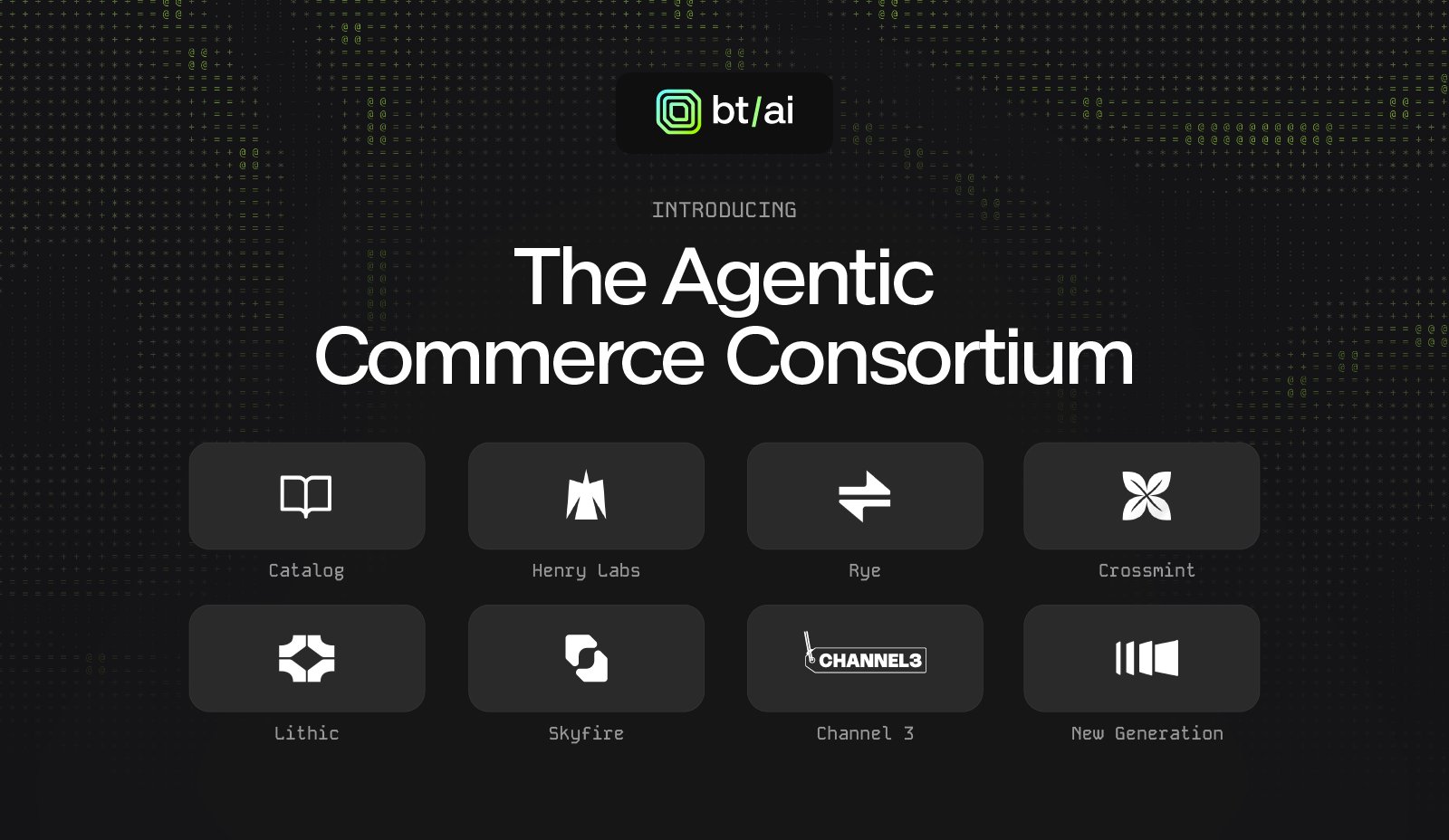Introducing the Agentic Commerce Consortium: A Collaborative Initiative

The buzz around AI is everywhere today. Every billboard in SF, every commercial on TV and streaming services, and every back-to-school night as the small-talk topic du jour. Everyone has their own (oftentimes ill-informed) opinion that ranges from unbridled excitement to deep personal & societal concerns to the projected cost of housing in the Bay Area after the latest OpenAI tender offer. And it’s no different within the confines of our more narrow ecosystem that is the payments industry as it relates to Agentic Commerce.
Everyone is all in on agentic commerce, with very little actual data to support the tangible use cases that will persist beyond gimmicky examples such as “book me a trip to Miami,” “plan my best friend’s baby shower,” or “I’m looking for a blue sweater.” The forgotten party in most conversations is the merchants.
Not anymore.
Introducing the Agentic Commerce Consortium
By forming the Agentic Commerce Consortium, and with the release of our inaugural whitepaper Empowering Merchant-Controlled AI Commerce: An Open Agentic Commerce Whitepaper, we are documenting a path forward to give merchants the ability to opt-into agentic commerce in a secure, controlled manner (versus just sitting back and getting scraped) while simultaneously pushing the industry forward with the realities of architectural constraints that exist in the way the internet functions today.
Here are a few things that I believe to be true today:
(1) While there is *a lot* of excitement around agentic commerce, there is very little actual agentic transaction volume flowing through the system right now. You can take an autonomous car from one end of SF to the other without any human intervention, but you still can’t book a ticket or trip agentically…
(2) Consumer behavior HAS changed, at least for younger generations, and we’re seeing it quantitatively in the data, where 43% of Millennials say they use AI at least weekly, and qualitatively in our own experiences (my own Gen Alpha kids are going straight to ChatGPT and/or Perplexity instead of Google.)
(3) As always, with great excitement and associated economic/revenue potential, there’s a landgrab of power taking place between various different ecosystem participants up and down the stack.
(4) Many companies are pitching “we have the answer.” Reality is, most of these solutions are either vaporware at the worst, predicated on unrealistic long-term business models or lacking the intellectual honesty to acknowledge that no one company is going to solve this and it’s going to require close coordination amongst a number of different providers.
(5) There is no agreed-upon definition of Agentic Commerce. Many people (rightfully so) assume this means fully autonomous agents transacting on behalf of without any human interaction (BUT WHAT ABOUT THE FRAUD?!?!?, said everyone.) That may be where we end up ultimately but that is NOT the case today. Almost every use case and flow currently contemplates a human-in-the-loop process for things like authentication and verification and intent, etc.
With all that said, our intention by creating this consortium and releasing our first whitepaper is twofold:
(1) First, to reiterate our commitment to the entire ecosystem and reinforce our belief that it’s going to ‘take a village’ (we are more than happy to play the role of facilitator here).
(2) Second, to offer up A (not “the”) roadmap to an agentic future, starting with the underlying infrastructure required to enable a fair playing field for all of the various constituents, including the merchants!
This won’t be the last consortium that gets put together and this certainly isn’t the first white paper written on this topic; just this week Google announced their Agent Payments Protocol (AP2) alongside a hefty number of contributing partners (with a few notable ones missing…) and we think that’s awesome. As we outline in the white paper AP2, MCP, etc. are different integration options that describe how an agent can communicate whereas our spec defines more of what they can discover.
Our view is that we must start by modernizing the existing underlying foundational infrastructure via APIs, but done in a way where AP2 or MCP or KYA or any other protocol can be built on top of or wrapped around it. It’s too early to know which protocols will gain adoption or whether who is behind the protocol will dictate said adoption.
This is just the start, and you should expect to hear more from us over the coming weeks and months. The formation of this consortium has been very intentional as it relates to solving for various complexities up and down the stack, from authorization and verification to discovery of product catalogs, the agentification of websites, unified shopping cart APIs, and of course, payments.
I’m humbled and honored to be joined in this effort by friends and colleagues who I admire and respect greatly. Huge thanks to the teams at Lithic, Skyfire, Rye, Crossmint, NewGen, Henry, Channel3, and Catalog.
More to come soon…
.png?width=365&height=122&name=BTLogo%20(1).png)



